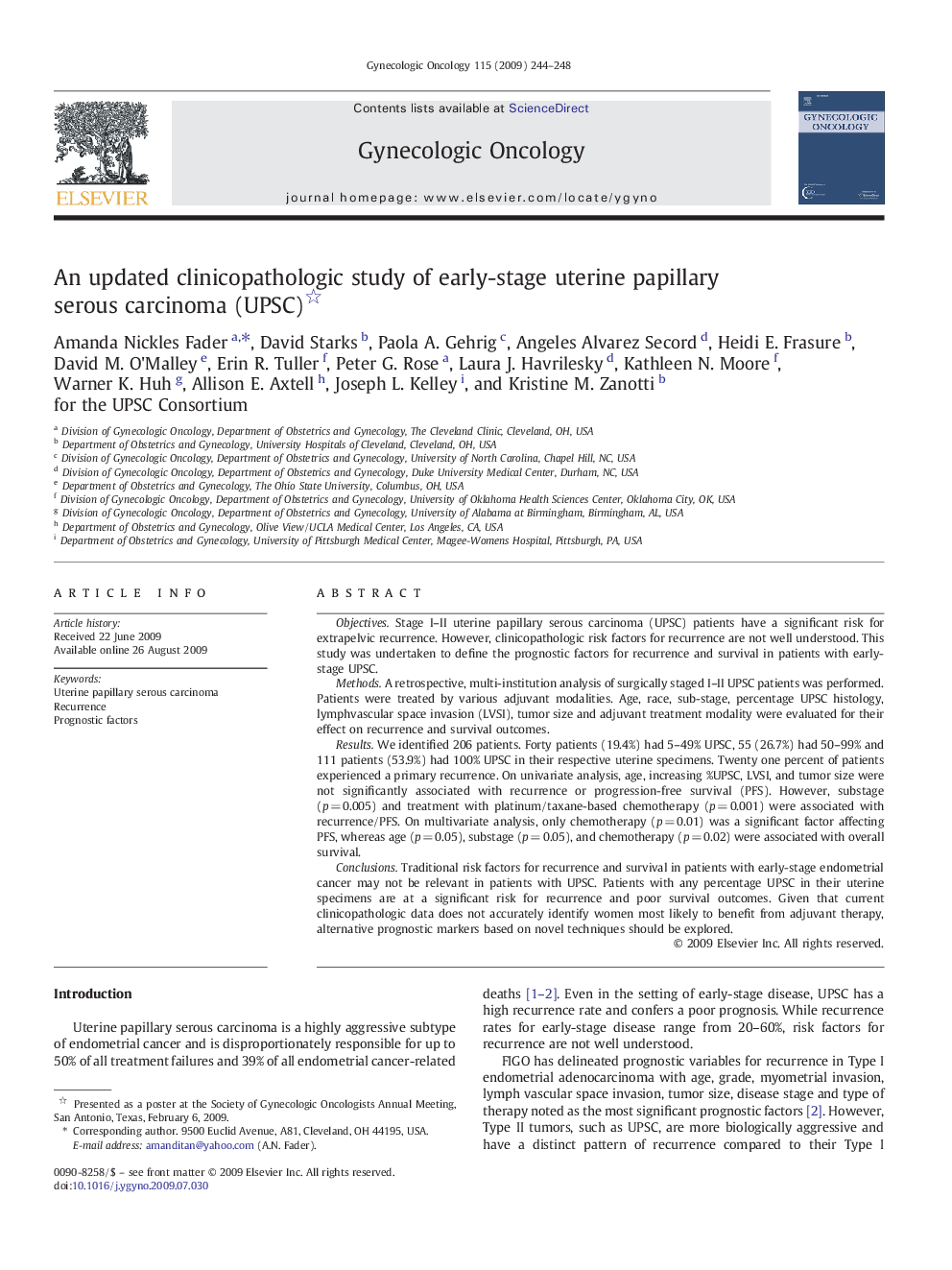| Article ID | Journal | Published Year | Pages | File Type |
|---|---|---|---|---|
| 3943293 | Gynecologic Oncology | 2009 | 5 Pages |
ObjectivesStage I–II uterine papillary serous carcinoma (UPSC) patients have a significant risk for extrapelvic recurrence. However, clinicopathologic risk factors for recurrence are not well understood. This study was undertaken to define the prognostic factors for recurrence and survival in patients with early-stage UPSC.MethodsA retrospective, multi-institution analysis of surgically staged I–II UPSC patients was performed. Patients were treated by various adjuvant modalities. Age, race, sub-stage, percentage UPSC histology, lymphvascular space invasion (LVSI), tumor size and adjuvant treatment modality were evaluated for their effect on recurrence and survival outcomes.ResultsWe identified 206 patients. Forty patients (19.4%) had 5–49% UPSC, 55 (26.7%) had 50–99% and 111 patients (53.9%) had 100% UPSC in their respective uterine specimens. Twenty one percent of patients experienced a primary recurrence. On univariate analysis, age, increasing %UPSC, LVSI, and tumor size were not significantly associated with recurrence or progression-free survival (PFS). However, substage (p = 0.005) and treatment with platinum/taxane-based chemotherapy (p = 0.001) were associated with recurrence/PFS. On multivariate analysis, only chemotherapy (p = 0.01) was a significant factor affecting PFS, whereas age (p = 0.05), substage (p = 0.05), and chemotherapy (p = 0.02) were associated with overall survival.ConclusionsTraditional risk factors for recurrence and survival in patients with early-stage endometrial cancer may not be relevant in patients with UPSC. Patients with any percentage UPSC in their uterine specimens are at a significant risk for recurrence and poor survival outcomes. Given that current clinicopathologic data does not accurately identify women most likely to benefit from adjuvant therapy, alternative prognostic markers based on novel techniques should be explored.
